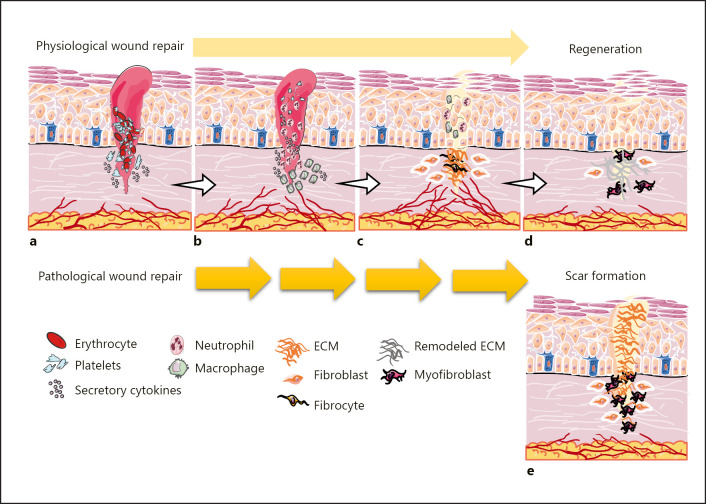Fig. 1.
The cutaneous wound healing process, a regenerative or reparative response. The skin tissue response following injuries in gestation and injured fetal tissues is regeneration via a physiological wound healing process including four stages. a In the hemostasis phase, platelets are involved in the formation of the blood clot and the release of cytokines required in the inflammatory cell recruitment. b In the inflammation stage, neutrophils and macrophages are activated to phagocytosis of pathogens and damaged cells. Moreover, neutrophils secrete cytokines increasing the severity of inflammatory responses and macrophages facilitate the transition from inflammation to proliferation. c In the proliferation phase, reepithelialization leads to the covered wound surface, the vascular network is restored, and the provisional matrix is replaced with the granular tissue. d In the remodeling, stage fibroblasts differentiate into myofibroblasts, and collagen type III fibers are replaced with collagen type I fibers. e Any abnormalities which are leading to delayed repair or enhanced cell responses propel the wounds to pathological or reparative healing accompanied by cutaneous scar formation which is happened in human adults.

